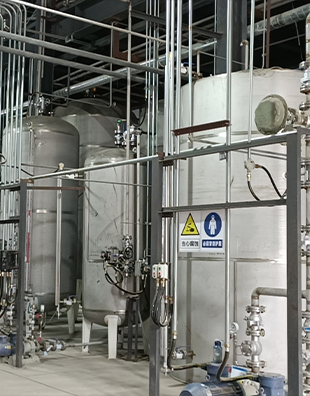Exploring the Applications and Benefits of Cationic Polyacrylamide in Various Industries
Cationic Polyacrylamide A Versatile Polymer for Modern Applications
Cationic polyacrylamide (CPAM) is a prominent polymer known for its wide array of applications in various industries due to its unique properties. As a water-soluble polymer, it is characterized by its cationic charge, which significantly enhances its functionalities in specific environments. The chemical structure of cationic polyacrylamide is derived from the polymerization of acrylamide monomers, wherein quaternary ammonium groups are introduced, granting the polymer its positive charge.
One of the primary applications of cationic polyacrylamide lies in water treatment processes. The cationic nature of CPAM allows it to effectively bind with negatively charged particles such as colloids, organic matter, and suspended solids. This property makes it an excellent flocculant and coagulant, promoting the aggregation of fine particles into larger flocs that can be easily removed from water systems. Water treatment facilities utilize CPAM to improve the efficiency of sludge dewatering, resulting in clearer effluent and less environmental impact.
In addition to water treatment, cationic polyacrylamide is extensively used in the paper and pulp industry. It acts as a retention aid, helping to ensure that fine fibers and fillers remain within the paper matrix during production. This not only enhances the quality and opacity of the paper but also minimizes waste, making the manufacturing process more sustainable. Furthermore, CPAM improves the overall mechanical strength of the paper products, which is crucial in meeting market standards.
cationic polyacrylamide

Another vital application of cationic polyacrylamide is found in the agricultural sector. It is often utilized as a soil conditioner to improve water retention and reduce erosion. By applying CPAM to soil, farmers can enhance the structure and stability of the soil, leading to better crop yields. Moreover, its ability to bind with nutrients ensures that these essential elements remain in the root zone, promoting healthier plant growth and reducing the need for chemical fertilizers.
Cationic polyacrylamide also plays a significant role in the oil and gas industries. It is employed in enhanced oil recovery (EOR) techniques, where it helps to increase the viscosity of water injected into oil reservoirs. This improved viscosity assists in the displacement of oil, making extraction easier and more efficient. Additionally, its use in drilling mud formulations helps to stabilize wellbores, preventing collapses and ensuring safer drilling operations.
While cationic polyacrylamide offers numerous advantages, its use must be approached with caution. Concerns regarding the toxicity of acrylamide, a monomer used in its production, necessitate strict adherence to safety regulations and guidelines during manufacturing and application. Furthermore, environmental considerations regarding the biodegradability of CPAM must be addressed to prevent potential ecological impacts.
In conclusion, cationic polyacrylamide is a multifunctional polymer with significant applications across diverse industries, including water treatment, paper production, agriculture, and oil recovery. Its unique properties, particularly its cationic charge, render it invaluable in enhancing processes and sustainability. As advancements in polymer science continue, the potential for cationic polyacrylamide to contribute to more efficient and environmentally friendly practices is immense. With responsible usage and ongoing research, CPAM is set to play a crucial role in addressing various industrial challenges.
-
lk-319-special-scale-and-corrosion-inhibitor-for-steel-plants-advanced-solutions-for-industrial-water-systemsNewsAug.22,2025
-
flocculant-water-treatment-essential-chemical-solutions-for-purification-processesNewsAug.22,2025
-
isothiazolinones-versatile-microbial-control-agents-for-industrial-and-consumer-applicationsNewsAug.22,2025
-
scale-inhibitor-key-solutions-for-water-system-scale-preventionNewsAug.22,2025
-
organophosphonates-versatile-scale-inhibitors-for-industrial-water-systemsNewsAug.22,2025
-
scale-and-corrosion-inhibitor-essential-chemical-solutions-for-water-system-maintenanceNewsAug.22,2025





